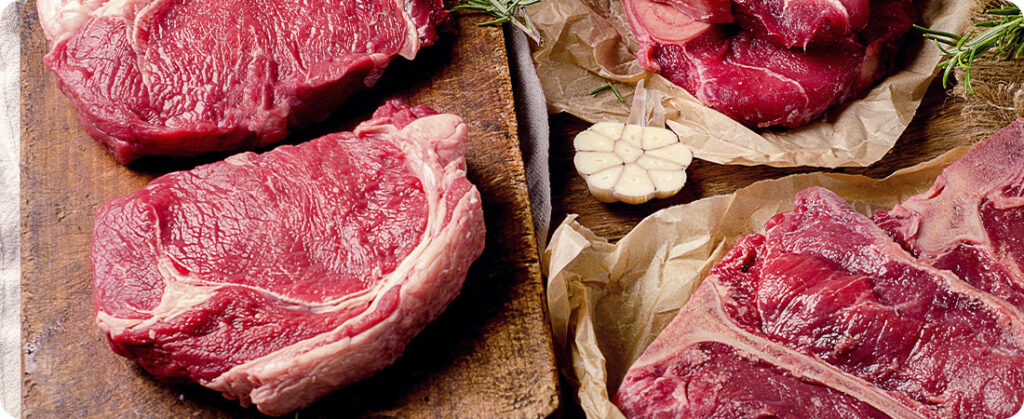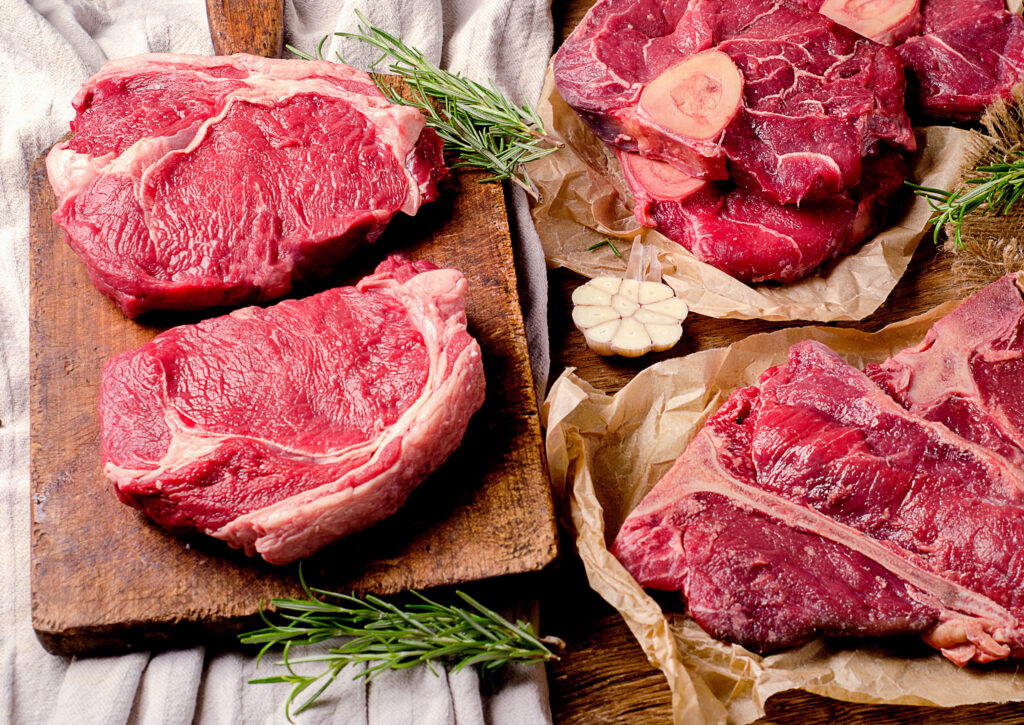
In the second quarter of 2023, there was an increase in the slaughter of cattle and chickens. Cattle slaughter increased by 12.6%, while chicken slaughter increased by 4.7%. However, pig slaughter decreased by 1.0%, according to IBGE, compared to the same period in 2022. Compared to the 1st quarter of 2023, chicken slaughter fell by 3.2%, cattle slaughter grew by 13.4% and pigs fell 0.6%.
Milk acquisition totaled 5.72 billion liters, increasing 4.0% compared to the 2nd quarter of 2022, but falling 3.9% compared to the previous quarter. Tanneries purchased 8.38 million pieces of leather. This represents an increase of 9.5% compared to the 2nd quarter of 2022 and 8.5% compared to the 1st quarter of 2023.
Chicken egg production in the 2nd quarter of this year reached 1.05 billion dozen. This represents an increase of 2.9% compared to the previous year and 2.0% compared to the 1st quarter of 2023.
Cattle slaughter increases 12.6% compared to the 2nd quarter of 2022
Milk acquisition totaled 5.72 billion liters, increasing 4.0% compared to the 2nd quarter of 2022 and falling 3.9% compared to the previous quarter.
Tanneries purchased 8.38 million pieces of leather. This represented an increase of 9.5% compared to the 2nd quarter of 2022 and 8.5% compared to the 1st quarter of 2023.
In the 2nd quarter, egg production reached 1.05 billion dozen, an increase of 2.9% compared to 2022 and 2.0% compared to the 1st quarter of 2023.
Milk acquisition totaled 5.72 billion liters. There was an increase of 4.0% compared to the 2nd quarter of 2022, but a decrease of 3.9% compared to the previous quarter.
In May, there was a total slaughter of 298.87 thousand heads, an increase of 14.7% compared to the same month of the previous year.
The slaughter of females increased by 23.9% compared to the 2nd period of 2022, registering a record for the heifer category. Meanwhile, the slaughter of males increased by 5.1% in the same comparison.
The increase in cattle slaughter of 934.45 thousand heads in the 2nd quarter of 2023 was driven by 18 of the 27 federation units. The biggest increases occurred in Mato Grosso (+310.74 thousand heads), Rondônia (+243.27 thousand heads), Goiás (+187.91 thousand heads), Tocantins (+43.36 thousand heads), Minas Gerais (+ 42.69 thousand heads), Bahia (+38.25 thousand heads), Pará (+37.19 thousand heads) and Rio Grande do Sul (+37.15 thousand heads).
Mato Grosso continues to lead the slaughter of cattle, with 17.0% of the national share, followed by Goiás (10.9%) and São Paulo (10.6%).
Pig slaughter falls and interrupts increase that began in 2014
In the 2nd quarter of 2023, there were 14.08 million pig slaughters. There was a decrease of 1.0% compared to the same period in 2022 and 0.6% compared to the 1st quarter of 2023. This result interrupted a series of positive annual comparisons that had been going on since the second quarter of 2014.
In the second quarter of 2023, there was a slaughter of 148.23 thousand fewer head of pigs compared to 2022. This reduction occurred in 17 of the 24 federation units.
Falls were recorded in: Rio Grande do Sul (-108.59 thousand heads), Minas Gerais (-85.43 thousand heads), São Paulo (-60.87 thousand heads), Mato Grosso (-53.36 thousand heads ) and Goiás (-53.30 thousand heads). On the other hand, there were greater increases in: Santa Catarina (+133.33 thousand heads), Paraná (+81.78 thousand heads) and Mato Grosso do Sul (+15.20 thousand heads).
In the ranking of UFs, Santa Catarina leads the slaughter of pigs, with 29.7% of national participation. Next come Paraná (21.4%) and Rio Grande do Sul (16.5%).
Chicken slaughter has the best second quarter in the historical series started in 1997
In the 2nd quarter of 2023, 1.56 billion heads of chickens were slaughtered. This represented an increase of 4.7% compared to the same period in 2022. However, there was a drop of 3.2% compared to the 1st quarter of 2023. This performance marked the best second quarter in the survey's historical series, which began in 1997, with the highest records ever recorded in the months of May and June.
The 17 of the 25 federation units that participated in the survey determined the slaughter of 70.03 million more chicken heads compared to the second quarter of 2022. Increases occurred in: Paraná (+29.01 million heads), Goiás ( +15.29 million head), São Paulo (+11.71 million head), Santa Catarina (+6.29 million head), Rio Grande do Sul (+3.88 million head), Minas Gerais ( +3.72 million heads) and Mato Grosso (+2.15 million heads). On the other hand, there were drops in: Mato Grosso do Sul (-2.01 million heads) and Bahia (-1.47 million heads).
Paraná largely leads the slaughter of chickens, with 34.2% of the national share, followed by Santa Catarina (13.0%) and Rio Grande do Sul (12.9%).
Milk acquisition grows by 4.0% in the annual comparison
In the 2nd quarter of 2023, the acquisition of raw milk by establishments under health inspection (federal, state or municipal) totaled 5.72 billion liters, representing an increase of 4.0% in relation to the 2nd quarter of 2022. However, there was a drop of 3.9% compared to the previous quarter.
The increase of 217.77 million liters of milk collected nationally in the comparison between the 2nd quarter of 2023 and the same period in 2022 occurred in 22 of the 26 UFs participating in the Quarterly Milk Survey. The most significant positive variations, for example, occurred in Santa Catarina (+79.23 million liters), Goiás (+35.97 million liters), Rio Grande do Sul (+32.16 million liters), among others. On the other hand, Minas Gerais and São Paulo had more relevant decreases.
Minas Gerais led the milk acquisition ranking, with 23.0% of national capture, as well as Paraná (14.3%), Santa Catarina (13.2%) and Rio Grande do Sul (12.6%).
Leather acquisition grows 9.5% compared to the 2nd quarter of 2022
In the 2nd quarter of 2023, the tanneries investigated by the Quarterly Leather Survey declared having received 8.38 million pieces of leather. Furthermore, this total represents increases of 9.5% in relation to the same quarter of 2022 and of 8.5% in relation to the 1st quarter of 2023.
The comparison between the 2nd quarters of 2022 and 2023 indicates a positive variation of 728.68 thousand pieces in the total purchased by establishments. In other words, twelve of the 17 federation units investigated showed increases. Likewise, the most significant positive variations occurred in Rondônia (+216.10 thousand pieces), Goiás (+182.00 thousand pieces), Mato Grosso (+162.52 thousand pieces), Pará (+90.32 thousand pieces), São Paulo (+82.35 thousand pieces) and Paraná (+41.69 thousand pieces).
Mato Grosso continues to be the leader among the Federation Units that receive pieces of rawhide for processing, with 16.2% of national participation, followed by Mato Grosso do Sul and Goiás.
Chicken egg production reaches record 1.05 billion dozen
In the 2nd quarter of 2023, chicken egg production reached 1.05 billion dozen. This quantity, moreover, was 2.9% greater than that of the same quarter in 2022 and exceeds the immediately previous quarter by 2.0%. Production reached the second highest record, being the highest for a 2nd quarter since the beginning of the survey's historical series, in 1987.
The additional 29.03 million dozen eggs produced nationally resulted from increases in 20 of the 26 UFs with farms included in the survey. The biggest increases occurred in Paraná (+5.87 million dozens), Rio Grande do Sul (+4.76 million dozens), Ceará (+4.42 million dozens), São Paulo (+3.40 million dozens), Mato Grosso (+2.73 million dozens) and Goiás (+2.45 million dozens). On the other hand, on the other hand, the most significant reduction was in Espírito Santo (-2.28 million dozens).
With 26.5% of national production, São Paulo remained the largest egg producer in the second quarter of 2023. This was followed by Paraná (10.1%), Minas Gerais (8.9%) and Espírito Santo (8.0%).
Source: datagro













